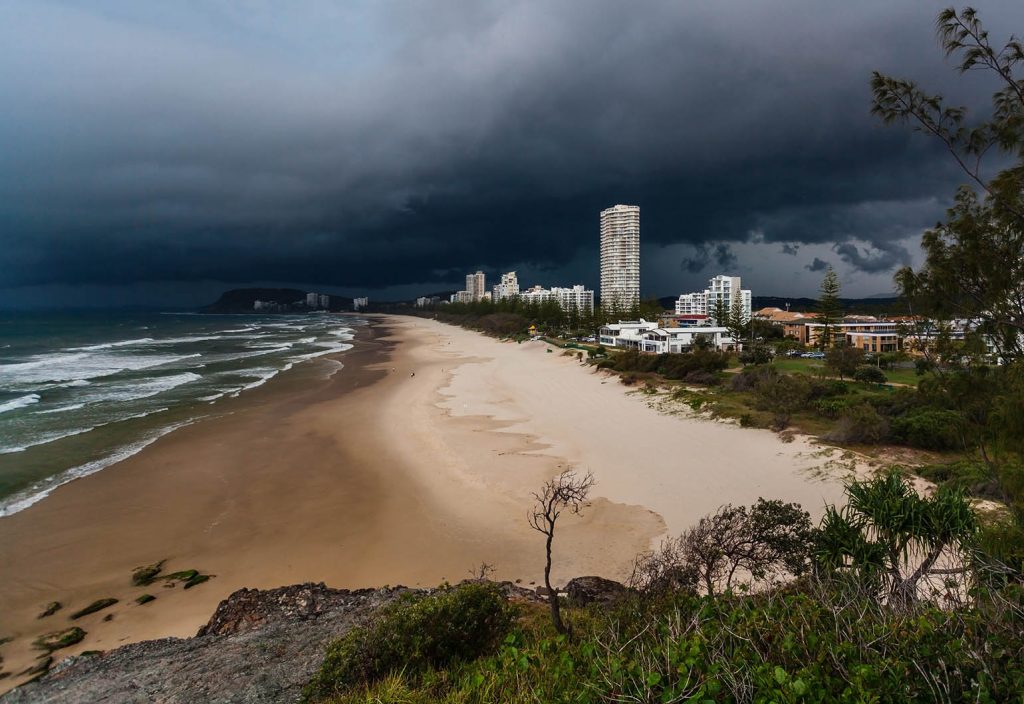Keeping coastal environments safe from erosion is a challenging task that can require more refined approaches than simple seawalls.
As climate change heats the world’s oceans, some of Australia’s iconic beaches are at risk of disappearing.
Sea levels around the country are rising at a rate of about 35 mm per decade and, with more than 85 per cent of Australians living within 50 km of the coast, this presents a threat to both the natural and built environments.
The urgency is causing many local governments to reconsider how they manage and develop their beaches, and an innovation by coastal engineer Matthew Barnes is delivering a new approach.
A principal coastal engineer at BMT in Brisbane, Barnes has pioneered a trigger-based approach to development approvals for structures such as seawalls, which can protect assets in urban areas from changes in shoreline position.
Rather than constructing a seawall while the risk to assets is low, Barnes’s framework defines the preferred seawall footprint, sets triggers for when detailed design should be completed, and includes further triggers for when construction works can commence.
The framework is also supported by soft engineering works, including dune management and beach nourishment, before the seawall triggers are reached.
“The development approvals framework tends to be quite static and you generally get the approval and have to build within two years,” says Barnes, who was recognised in create’s 2018 Most Innovative Engineers list for his trigger-based approach.
“Unfortunately, we don’t have a crystal ball to determine the optimal time for when plans for things like seawalls need to be implemented.
“By having a framework that the regulators are aware of and that can be supported through the monitoring of a coastal zone to understand how erosion is changing after storm events or sea-level rise, we can determine when an erosion trigger is met and when to move to the next stage of environmental management.
“This may eventually include hard engineering options like seawalls as a last defence.”
Adapting to change
Barnes grew up near Torquay at the eastern end of Victoria’s Great Ocean Road and describes himself as “a coastal and marine science nerd”.
“I knew as a kid that my career would have something to do with the beach,” he says.
Barnes moved north in 2005 to complete his PhD in civil engineering at the University of Queensland and has lived in Brisbane ever since.
“For better or worse, there’s lots of work for coastal engineers in Queensland,” he says. “I think some of that has to do with decisions that were made several decades ago around where to develop, and we’re dealing with some of those decisions and the challenges they present now.”
Barnes says the increased focus on climate change is generating more interest in his trigger-based approach, which has been adopted by local councils such as the City of Gold Coast and Moreton Bay Regional Council.
“They are investing in understanding when triggers for seawall upgrades, for example, might be reached and how that varies throughout their local government area, because every beach is unique and responds differently to what Mother Nature throws at it,” he says.
“Our customers want to invest in making the best decisions possible.”
A shift in focus
Barnes describes his role as a blend of engineering and planning.
“One of my colleagues has coined the term ‘plan-gineer’, because she feels like we’re often doing a bit of both,” he says.
“But the engineering behind this trigger-based approach is very much in the understanding and the modelling of coastal processes — the waves, currents, tides and all of those things will feed into the design of the coastal infrastructure.
“Planners and engineers working hand-in-hand through that whole process is how these projects run smoothly.”
This past July, Barnes’s focus shifted from engineering to full-time caregiving when he started six months of parental leave.
When he returns to work in January next year, he expects to continue his work with local government clients.
His trigger-based approach is helping to address challenges that arise where freehold land intersects with public spaces.
“You can end up with a situation where some private residents have already built seawalls, but the neighbours potentially have not,” says Barnes. “That creates its own issues where an ad hoc approach doesn’t really deliver the best outcome for the beach if a sea wall is to be implemented.
“We’ve seen councils wanting to get a preliminary approval for a reference design that private residents will take up and implement when they’re ready to build their seawall. The idea is that along a stretch of coast, you would end up with a consistent seawall design, but it is being funded by the private landowners.”
Barnes also expects his work to extend beyond local councils to local industry, such as ports.
“A lot of our port customers are wanting to understand their exposure to sea level rise and how their infrastructure is going to function under certain scenarios,” he says. “What upgrades will they need to be planning for and how much will they cost?”
Ports play an important role in the national economy, Barnes says, so he expects a lot of investment in how they manage for climate change.
“I think it’s a sector that I’ll be focusing on when I’m back on deck next year.”
For more of the latest engineering news sign up to create’s weekly newsletter.
